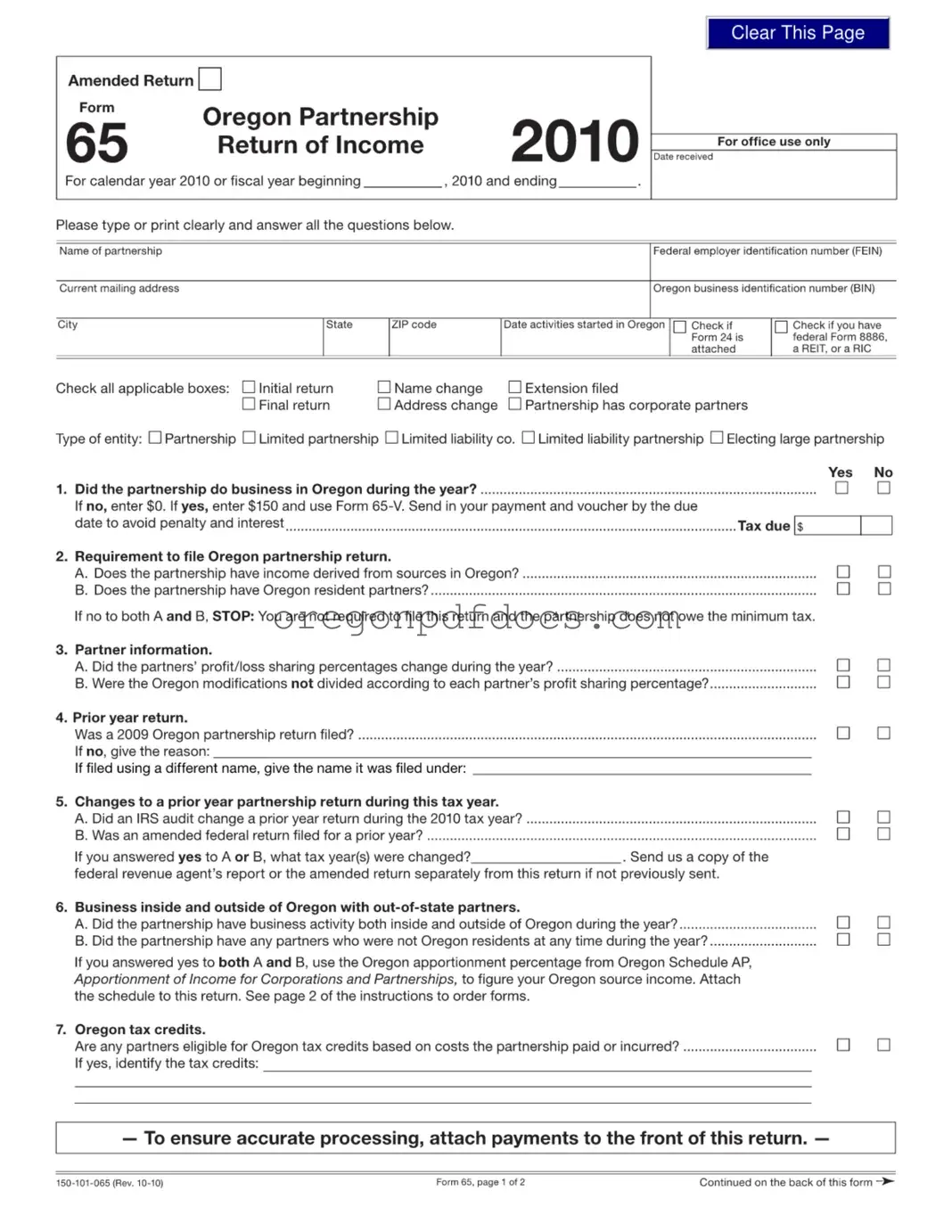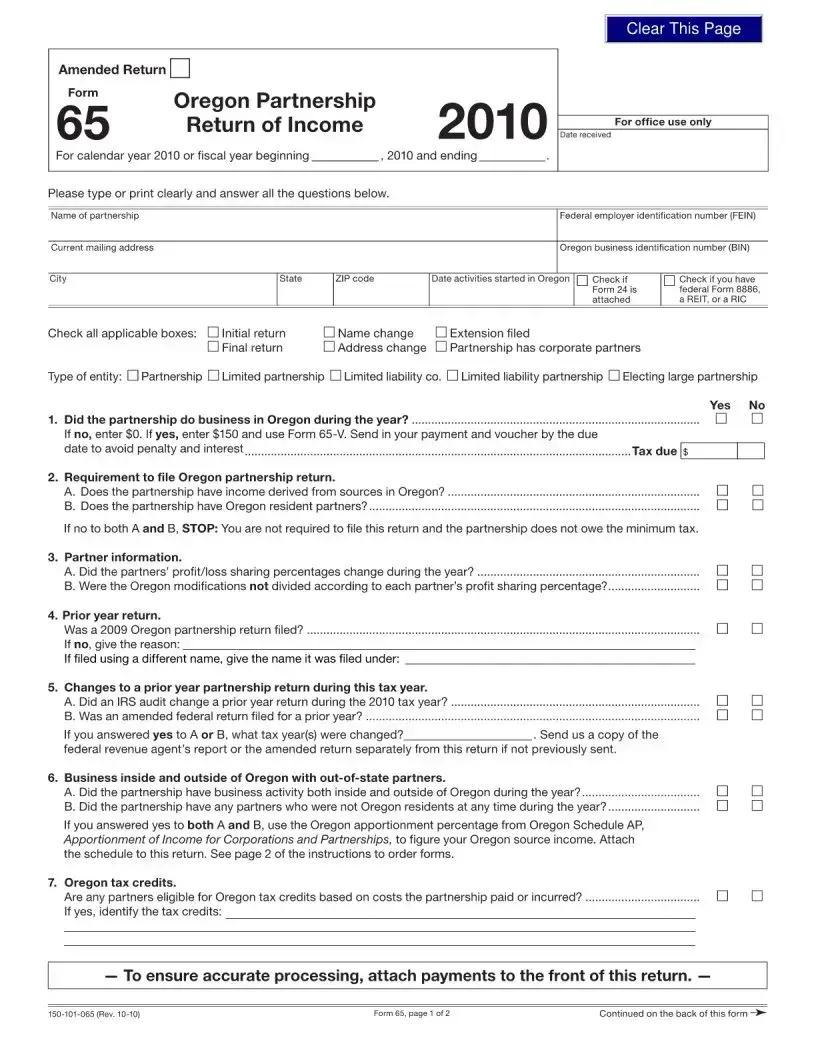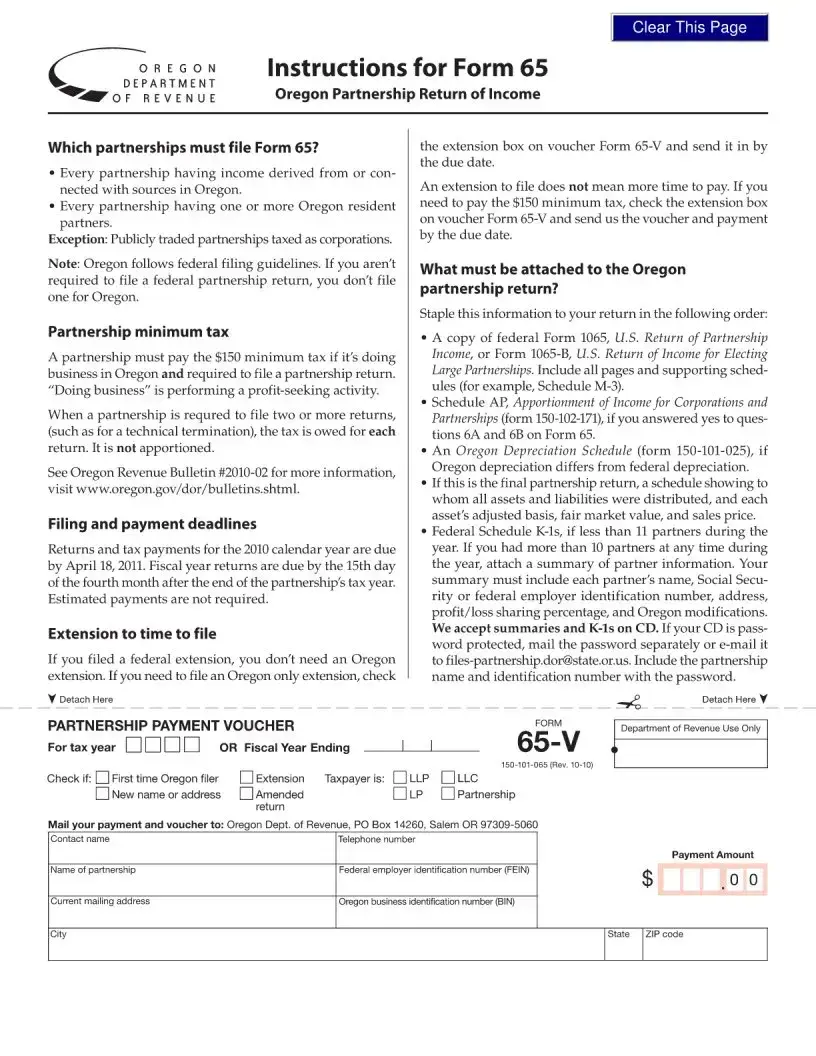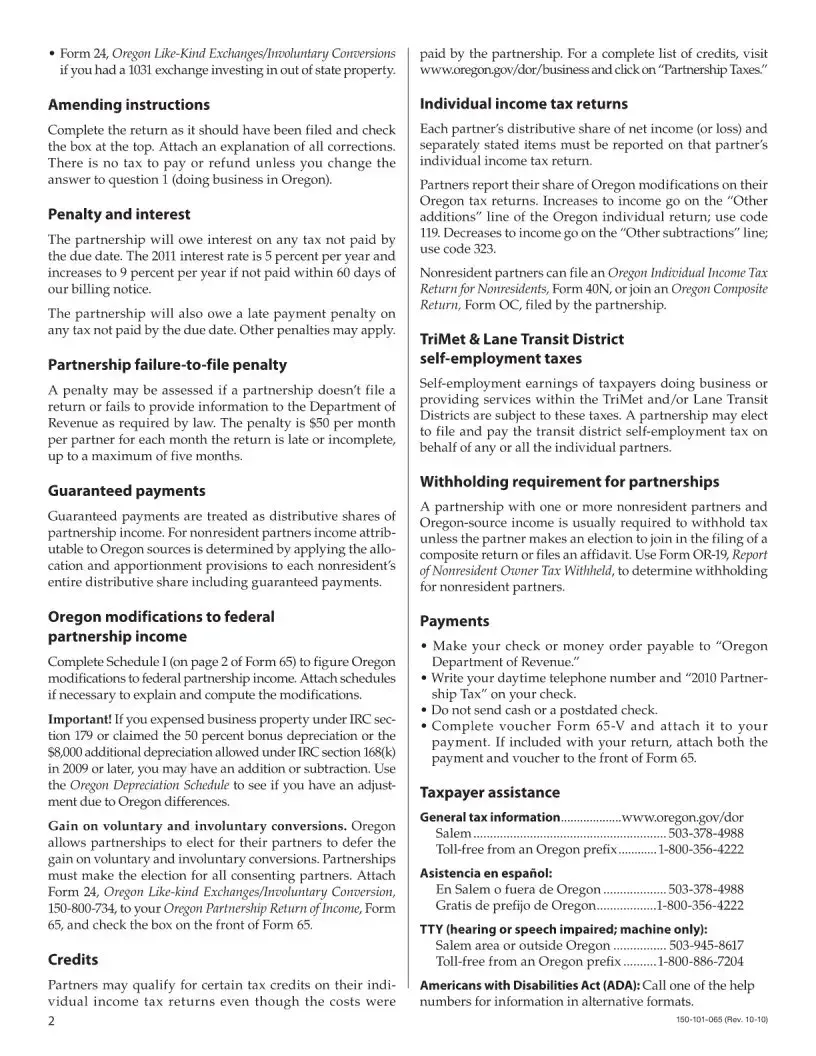The 65 Oregon Form serves as a critical document for partnerships operating within the state, ensuring compliance with Oregon tax laws. This form is utilized to report income, deductions, and various other financial details pertinent to partnerships for the tax year. It requires partnerships to provide essential information, such as their federal employer identification number (FEIN), Oregon business identification number (BIN), and the current mailing address. Additionally, the form prompts partnerships to indicate whether they are filing an initial, final, or amended return, and whether there have been any changes in the partnership’s structure or partner information throughout the year. Importantly, partnerships must assess their business activities in Oregon and determine if they owe the minimum tax of $150, which is applicable if they conducted business within the state. The form also addresses the need for partnerships with out-of-state partners to report their Oregon source income accurately, utilizing the Oregon apportionment percentage. Furthermore, it allows for the identification of any eligible Oregon tax credits based on expenses incurred by the partnership. By providing a comprehensive overview of these elements, the 65 Oregon Form plays a vital role in the state's tax collection process and ensures that partnerships fulfill their obligations while benefiting from available tax incentives.




